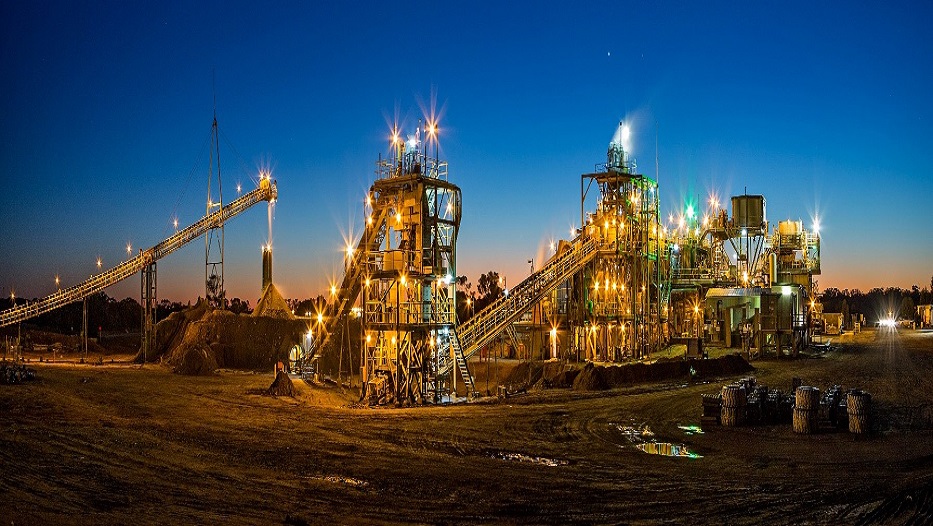Mining, a long-standing activity with a strong traditional profile, has experienced the greatest changes in its history in past 100 years, particularly in efficiency and safety. This transformation culminated in recent years when technologies associated with Industry 4.0 began to be implemented in the sector. Automation, Artificial Intelligence, and the use of drones are just some examples of the progress being made toward Mining 4.0, which aspires toward sustainable, safe, and productive operations.
It has been considered a traditional sector for a long time, but its rudimentary character has not kept it from growing technologically, particularly in recent years when investment in R&D, technology, and human capital have significantly defined its progress. The most important mining advancements in recent decades can be summarized in four categories: safety improvements, increased productivity, caring for the environment, and using resources more efficiently. These factors focus jointly on the objective of working toward a world of mining that is increasingly sustainable, better perceived and integrated into society, and which is constantly seeking out new improvements.
Ángel Cámara Rascón, Ph.D. in Mine Engineering and Professor in the Department of Energy and Fuel at the Mining Engineering at the UPM, stated that “the new world of mining is fully focused on continually finding solutions to develop deposits that are increasingly complex, deep, and have reduced mineral grades.” The expert asserted that most processes will be automated or remote “with reduced energy and water consumption, a progressively smaller environmental impact, and progressive use of clean energy” thanks to use of electric-battery-operated equipment with all of their processes optimized or analyzing data obtained and transmitted in real-time with synonymous terms for most industrial installations—such as smart factory, digital factory, connected factory, etc.
It is clear that the sector is making advances, but there are always obstacles. Possibly the greatest resistance to technological development is based on the fact that the needs associated with human capital in this new type of mining are different from the needs of traditional mining. The profile of the “new miner” must progress towards one that includes knowledge on automation, digitalization, and interoperability. And there are other challenges to face.
A complex context
As Cámara Rascón noted, in recent decades, “the mining sector has been known for carrying out its operations in increasingly adverse contexts. Generally, we can say that the following phenomena are occurring: depletion of surface deposit reserves, gradually reduced grades, reduced productivity in deposits that have been operating for a long time, increased labor costs, and difficulty accessing new deposits due to environmental issues.”
In Spain, social pressure is high and environmental requirements are strict. This means that companies are resorting to new models, such as the “low environmental impact operation” model. Other techniques to implement extraction operations in line with these new standards have been proposed, including “Green mining” or “Sustainable mining.” “There has been a general opposition, in many cases, without any technical reasoning to justify it, to undertaking extraction operations, which is known as the Not-In-My-Backyard (NIMBY) effect, due to the potential problems that people residing in the surrounding area could experience. Or, even worse, movements organized with the intent of making the sector disappear, overlooking the fact that there is mining in other countries with significantly fewer personal and environmental protections,” the expert explained. However, in conclusion, he affirmed that “mining is currently a fully innovative and imaginative sector when seeking out technical solutions.”
Primary players and cutting-edge technology
To achieve true technological development in the sector and drive “Mining 4.0,” three players must coordinate their efforts: mining companies, universities, and professionals working in research. According to Cámara Rascón, “there are lines of research along the entire value chain of mining operations, from the exploration phase to product commercialization, including extracting, concentrating, and refining metals.”
He added that “every sub-stage in this chain may be subject to a process of continual improvement and innovative technology can be used to make that stage safer, more efficient, and, in short, more sustainable. In the mines of the future, a veritable array of technology will be used to achieve productivity, safety, and economic objectives.”
An important aspect in mining, which is common in many mineral resources extracted today, is physically locating the deposits as they are in locations where nature, arbitrarily or randomly, found the right conditions to create them.

The needs associated with human capital in this new type of mining are different from the needs of tradi-tional mining. The profile of the “new miner” must progress towards one that includes knowledge on automation, digitalization and interoperability.
In this context, the technologies for automation, digitalization, connectivity, and data analysis will play a fundamental role in the new model. All the technology involved in the new processes of digitalization, including exploration and research, dynamic distribution of machinery, mining topography, use of teleoperated controls, process automation, Big Data studies, etc., are being used for an activity that was beyond imagination a few years ago. “If we consider the specific situation of the current pandemic as an example, some mines with remote- or self-operated mining equipment have been able to continue their work at practically 100% capacity with their supervisors controlling the operations from their homes or a control room, thereby minimizing their exposure to infection in a superb remote work situation,” the professor explained.
Currently, there are several software packages on the market that are used to create numeric models that, throughout a mine’s life, must be updated and modified with both the geological and economic data acquired, such as variations in the sales or quote price of a certain mineral product. The mining cavity is designed with these initial models, which are used to become familiar with all the geological resources present. Following that, an assessment is made about what is known as the economically extractable reserves.
The most useful technologies for achieving an authentic “Mining 4.0” world are, according to Cámara Rascón, “automation and robotics, artificial intelligence, the Internet of Things, sensors specifically designed for the sector, the use of drones, digital twins and virtual reality, and taking advantage of mining cavities for energy transmission and storage.”
Although technological advancement can be seen in every layer of the mining business; Cámara Rascón noted that “mineral extraction—understood as drilling, blasting, loading, and transportation—has the greatest potential for improvement through innovation in efficiency and productivity. Progress is ongoing, and new applications and improvements are appearing every day. Using the advances in digitalization as a reference point, and considering some of the primary development phases of a mining project, digitalization must be applied from the exploring and prospecting phase to the commercialization phase of minerals and products derived from them. In other words, throughout the entire value chain.”
Industry Challenges
There are many challenges, but as our expert explained, the industry must focus its efforts on two issues. “First, properly communicating to society that mining is a cornerstone of sustainable development in almost all technological areas, as it provides the raw materials that are essential to these developments. And second, ensuring that the resources produced by sustainable, efficient mining are distributed, invested, and generate profits for all the parties involved in the mining operation—employees, providers, mining companies, communities, and public institutions—in short, that it improves people’s quality of life.”
From a technical standpoint, mining companies have fully prepared workforces to develop these technologies, and there are business groups that are undertaking initiatives to address adverse conditions. For example, in the copper sector, one of those mining groups adopted several measures to address the gradual decrease in the metal’s grade or content in the deposits.
In addition, Cámara Rascón stated that “similarly, regarding plant mills, which perform one of the basic operations for releasing the metal particles that make up the extracted ore, the diameters of the mills have tripled in the past 50 years and their installed power has increased 60 times over. There are many benefits and, together with efficiency and productivity, the greatest contribution from these new technologies will be precisely in the field of safety.” As confirmed, the most fundamental improvement is focused on safety; however, mines will also see an increase in productivity as a consequence.
Article collaborators:
 Ángel Cámara Rascón, Ph.D. in Mine Engineering and Professor in the Department of Energy and Fuel at the School of Mining Engineering at the UPM, Chairman of the Board of Directors for the Association of Mine Engineers, member of the Board of Directors of the Spanish Environmental Club and NACE International (National Association of Corrosion Engineers International)
Ángel Cámara Rascón, Ph.D. in Mine Engineering and Professor in the Department of Energy and Fuel at the School of Mining Engineering at the UPM, Chairman of the Board of Directors for the Association of Mine Engineers, member of the Board of Directors of the Spanish Environmental Club and NACE International (National Association of Corrosion Engineers International)
Our expert also had the invaluable help of two colleagues: Carlos López Jimeno, Professor at the School of Mining Engineering of Madrid, and Felipe Lobo Ruano, Chairman of the Association of Mine Engineers of the South (Colegio de Ingenieros de Minas del Sur).




